
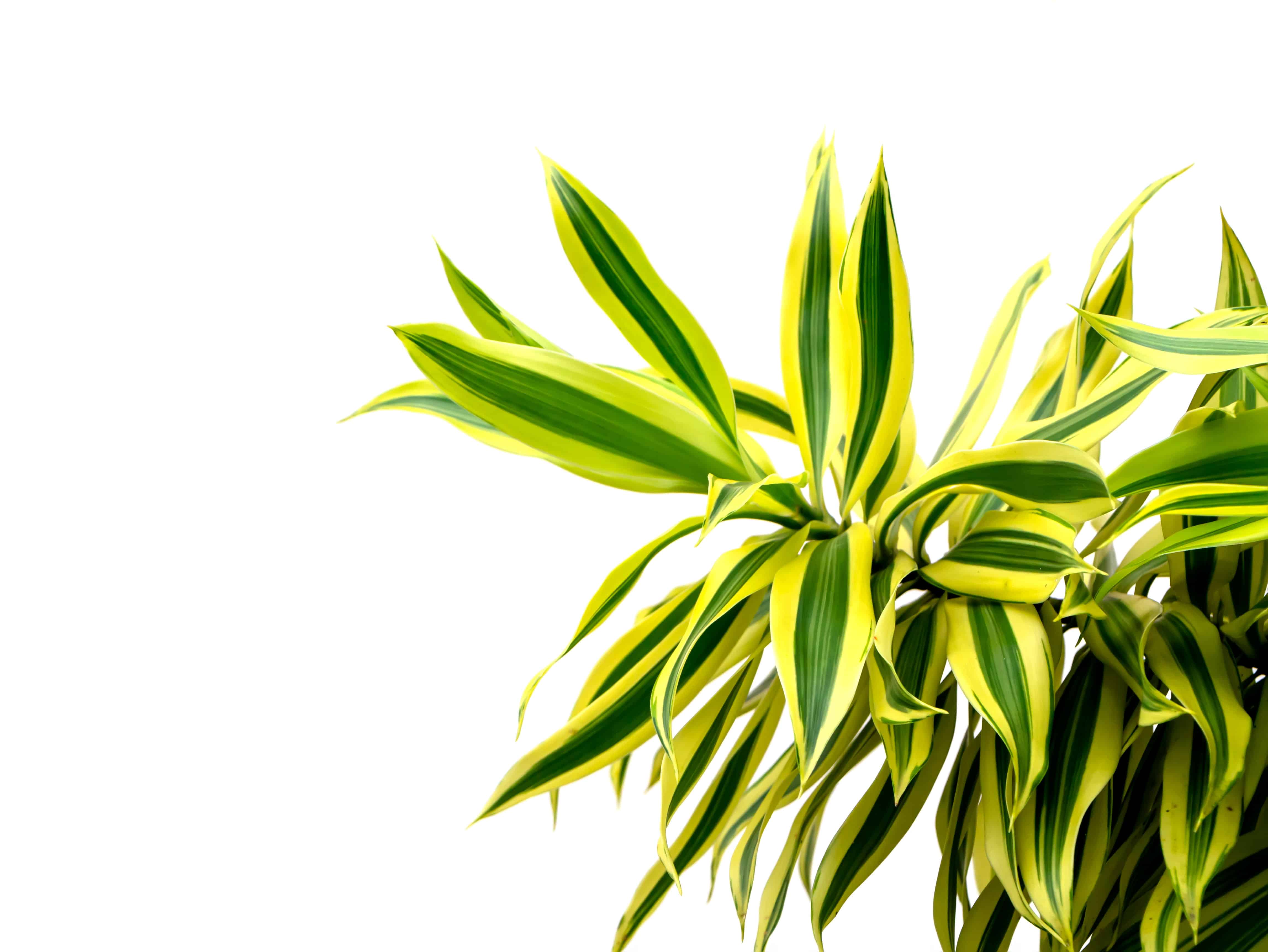

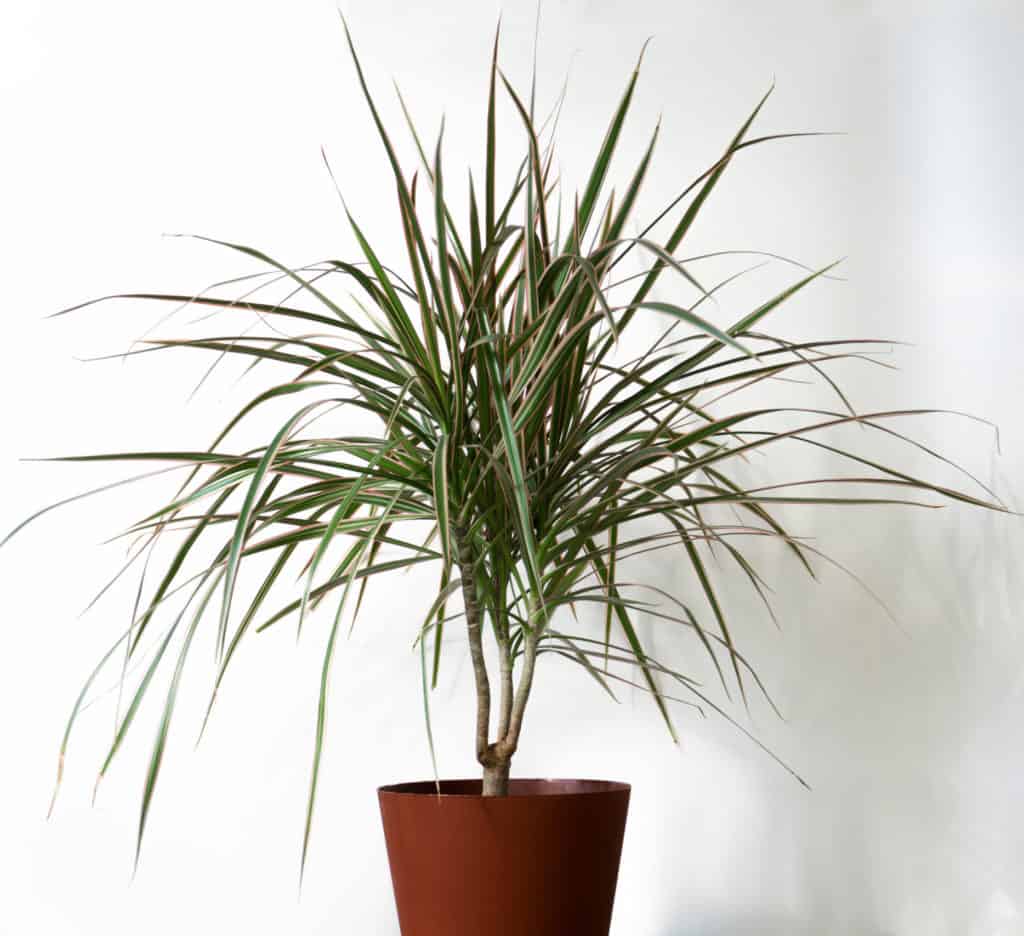

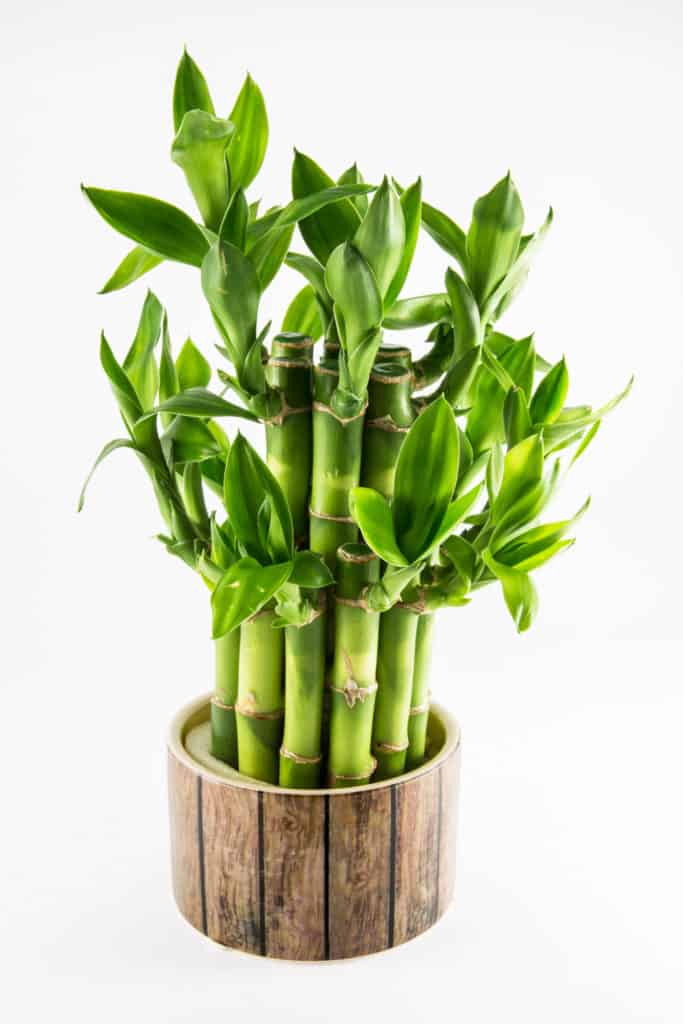
Why is your Dracaena/Corn Plant dying?
People love Dracaenas for their generally easy-to-care-for nature in homes and offices. Still, they are not entirely without problems of their own. For this article, we will focus on the stemmed varieties and not the “Snake Plant” type. I have seen a lot of blogs mention underwatering as the cause of brown tips and eventual death however, I find most gardeners new to dracaena tend to overwater. Dracaena are really only meant to be watered every 2-3 weeks. The instant I slowed my watering schedule down the brown tips and leaf blemishes went away on the new growth and pretty soon I had a handsome, healthy plant.
Quick Article Summary:
Dracaena or “Corn Plants” often die from overwatering or too much sun/too little water. Dark brown tips on leaves can indicate the roots can’t breathe. At this stage not watering for a while should fix it and new green growth will soon come. If the plant has lost its leaves or most of the leaves are brown and there is wet or stinky soil then you should change the soil and trim rotten roots first. If the plant’s soil is dry & the roots look healthy but the leaves are light brown – too much sun may be burning the plant. Put your plant in a shadier spot, give it water, and it should recover.
Below, I discuss the basics of your Dracaena’s needs, easy-to-spot problems like root rot and too much sun along with a few less-known causes for brown tips and leaves. I’ll show you how to save your plant from each malady, and tips to keep the plant in tip-top shape from here on out.
(As an Amazon Associate, I earn from qualifying purchases.)
Is it Root Rot?:
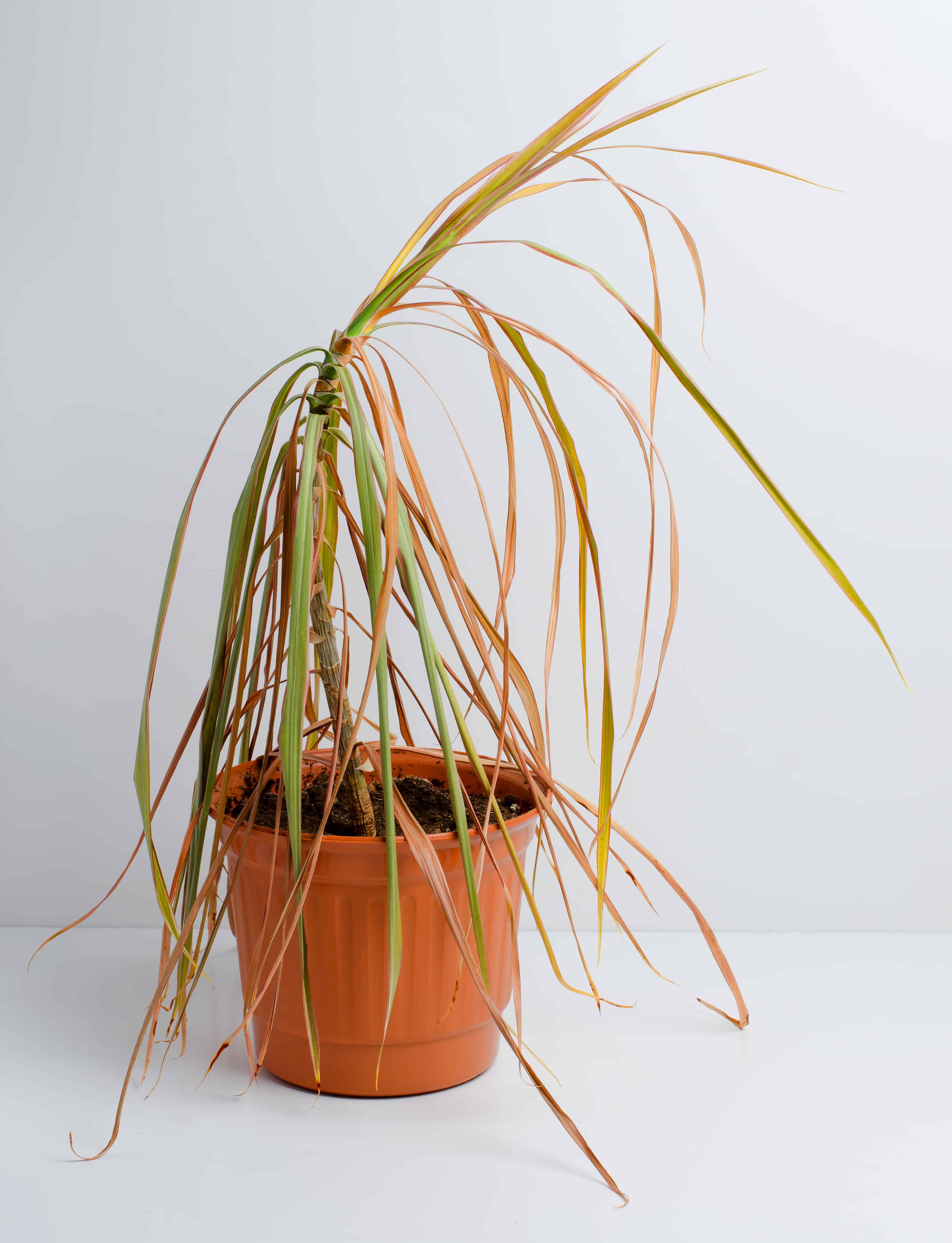
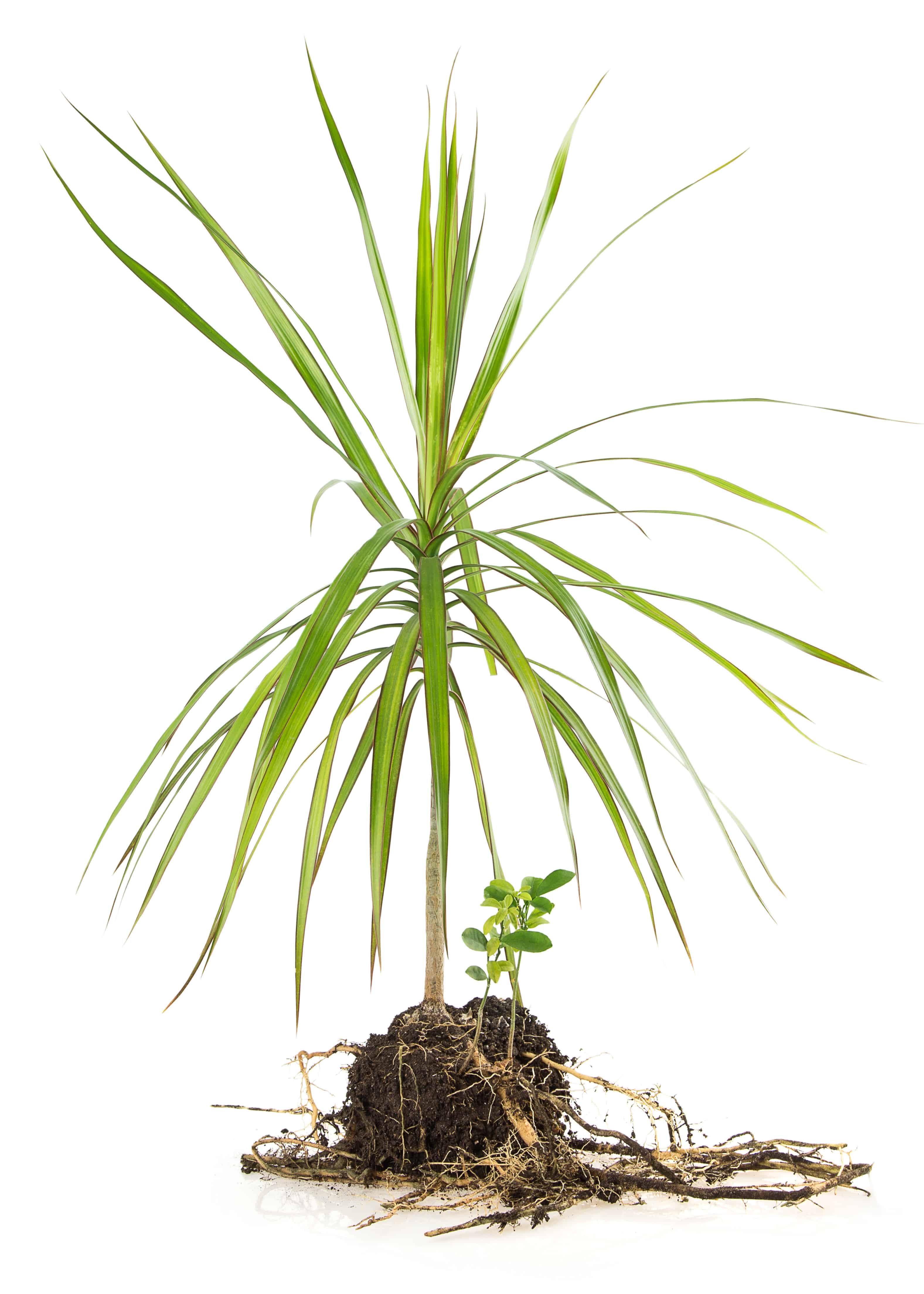
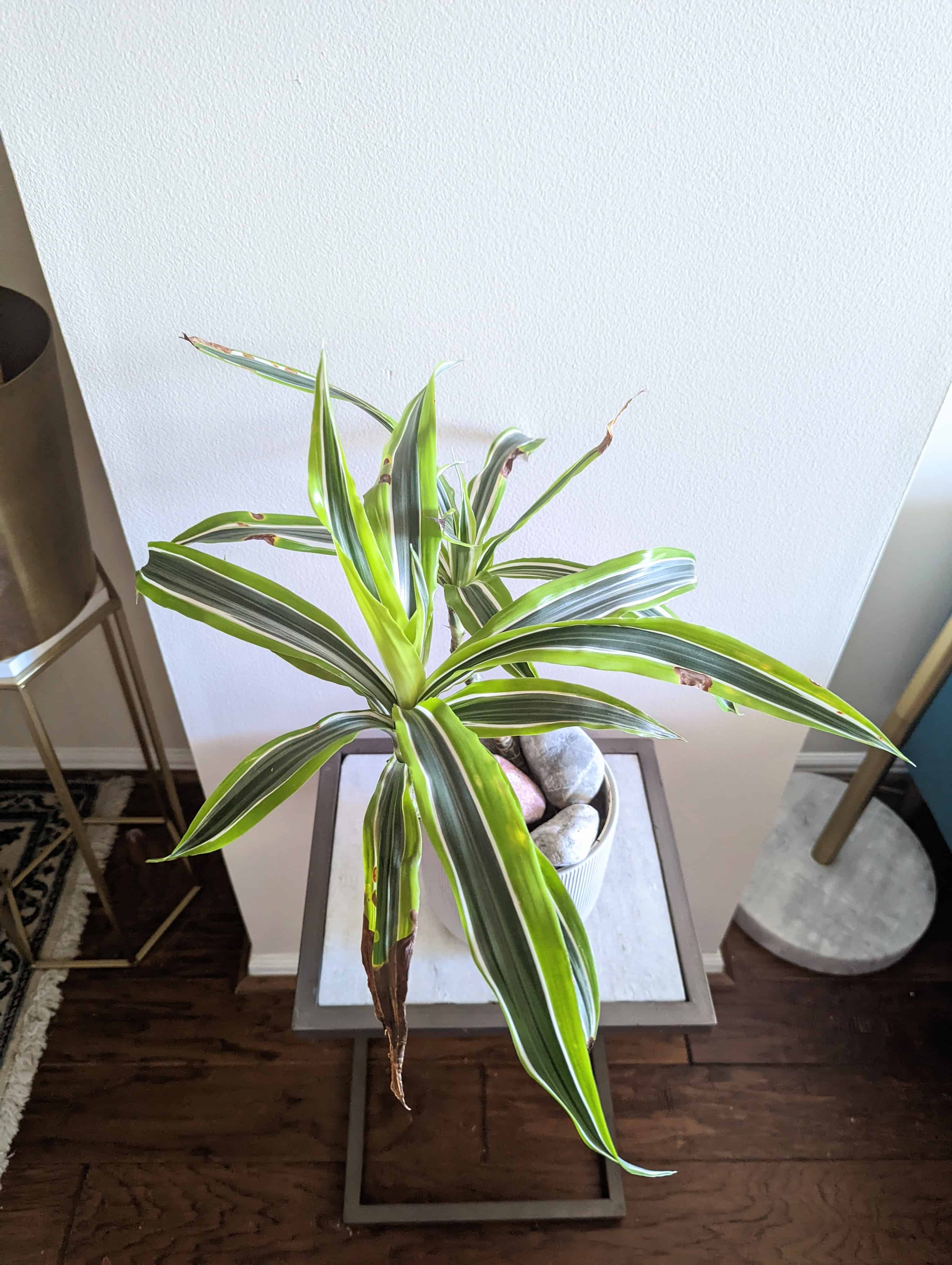
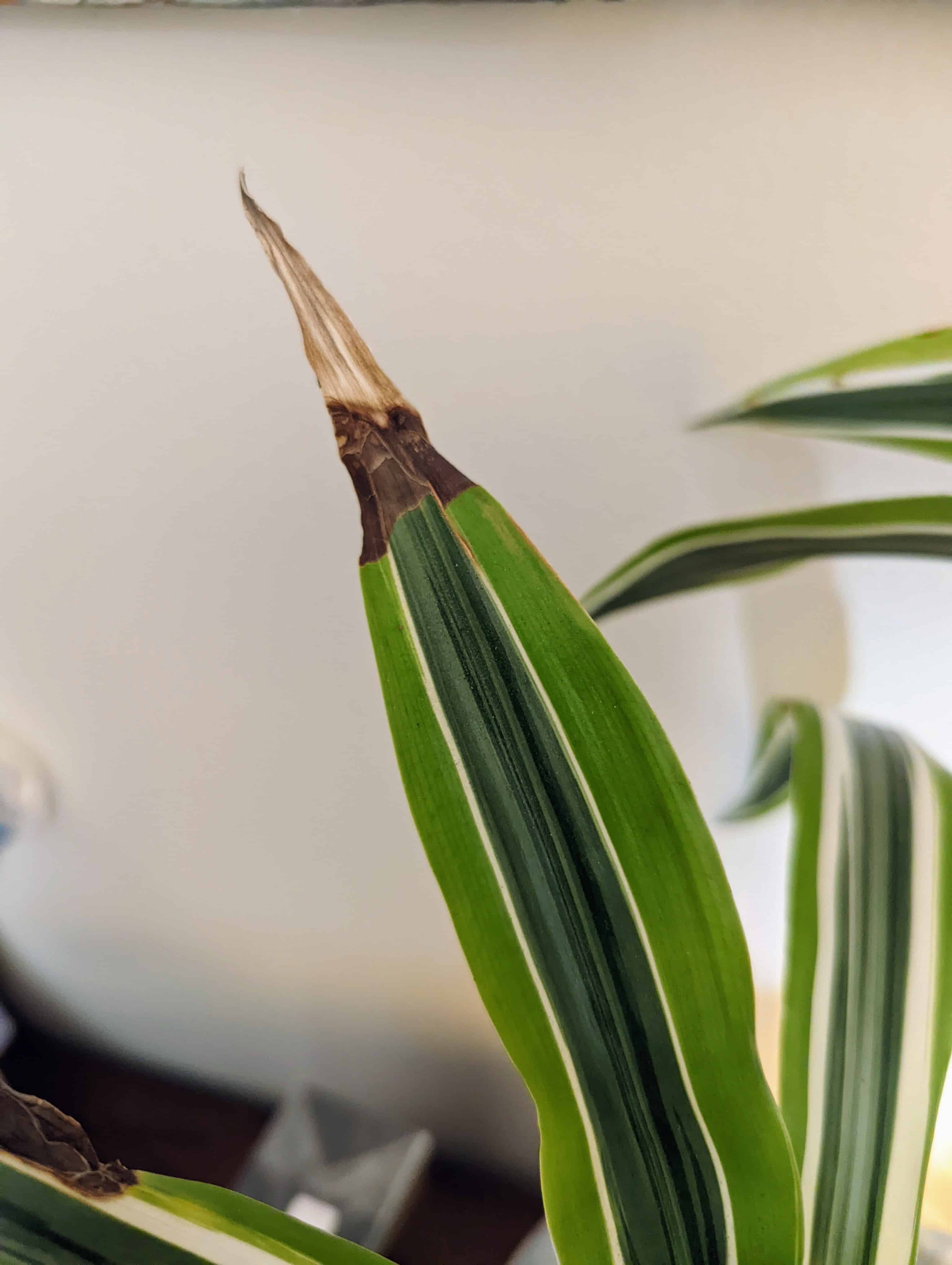
If the leaves have dark brown at the tips or edges and you’ve kept your plant safe from the sun, it could be a sign of overwatering soon to turn into full-fledged root rot. I’ve found that the longer the leaves have been dead the lighter the tips of the leaves get, see the above picture for reference. If you haven’t watered for a while (2-4 weeks) and the soil is dry or your plant has been in direct sun/outside and you’ve got light brown leaves or leaf tips then skip to the “Underwatering and/or Too Much Sun” section below by clicking here.
To Check for root rot, carefully take the plant out of its pot and inspect the roots:
1. If the roots are light brown/white and wet, the plant is fine. Avoid watering for a few days and monitor your Dracaena closely to see if it recovers.
2. If the Dracaena/Corn Plant’s roots are mushy, black, and smell awful, root rot has set in. If all the leaves are dead or have fallen off you may still be able to save the plant as long as there are still some healthy roots. If the main stem is mushy at the bottom, it is probably too late. If there are still some healthy roots you’ll have to act quickly to save your plant. See below:
Got root rot? Want pics and detailed instructions? Click here to go to our Root Rot Article
or if you just want the cliff notes:
How to Get Rid of Root Rot & Brown Tips
- Sterilize your cutting tool in 9:1 water to household bleach for 10 minutes. Afterward, wash it with soapy water and rinse thoroughly. Dry well before use.
- Cut the dead roots off with your sterilized cutting tool.
- Rinse off the infected soil from the remaining healthy, white roots.
- Trim off the damaged leaves.
- Trim part of the top foliage so that it’s in proportion to the remaining healthy roots. If this is unbalanced, the roots will not keep up with the plant’s demands with its limited root system.
- Place the trimmed Dracaena into a new pot with fresh, dry soil.
- Water lightly, ensuring water drains well.
- Let the plant recover for a few days and monitor its progress.
- Dispose of the infected soil. Reusing this will only cause any unfortunate plant placed in it to become sick.
- Clean and sterilize the old pot and cutting tool with the same bleach mixture for 10 minutes. Wash with soapy water, rinse and dry thoroughly before putting them away.
Is It Underwatering and/or Too Much Sunlight?
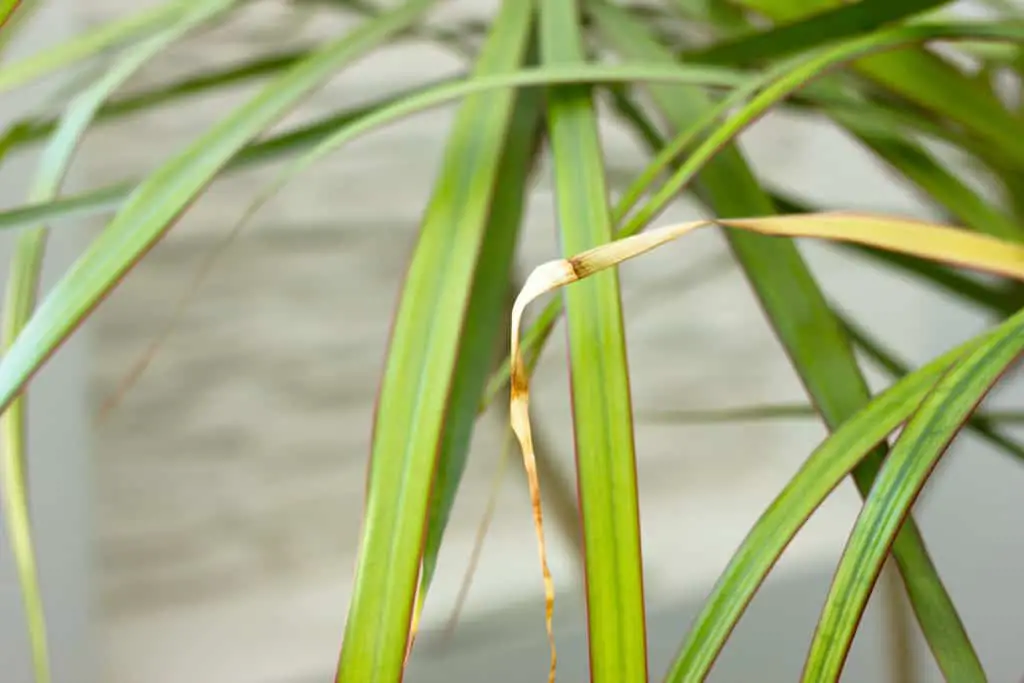
Underwatering is often evident with the accompanying crispiness of the light brown leaf tips.
- Give your plant small amounts of water until the soil is moist.
- Monitor it for a few days, making sure to check how damp the soil is each time. Most times the plant should recover in a day or two if it wasn’t too far gone. Keep in mind that brown tips cannot be revived so just snip them off, new growth is just around the corner.
More watering tips in this article: How Dry Should Soil Be Before Watering? – With Helpful Tips
Too much sun is usually apparent with the accompanying scorch marks on the leaf’s sides or larger parts of the leaf surface.
- Move your plant away to a more shaded area.
- Water it lightly to ensure the soil is moist. This particular problem comes with a frequent need to water your Dracaena due to how quickly water evaporates from the heat and the plant’s necessity to stay cool. Be sure not to overwater and check for soil dampness to tell you when it’s time to water again.
More tips on sunlight in this article: The 4 Basic But Very Important Elements of Houseplant Care : 3. Sunlight
Less Likely Causes for a Deathly Plant/Brown Leaf Tips:
Overfertilizing:
Evident by the accompanying white crust (salt build-up) on the soil surface or around the pot’s insides.
- Place your plant under running water in the sink or under a faucet outside.
- Allow the water to flow freely through the soil and out of the pot for 5 minutes. This technique will help flush out the rest of the unused fertilizers from the soil.
- After ensuring no excess water is dripping from the pot, set the plant aside, and monitor closely. Make sure to avoid fertilizing the plant for at least three months.
More soil & fertilization tips in this article: The 4 Basic But Very Important Elements of Houseplant Care: 2. Soil
Humidity:
The least likely suspect but, important to remember if all else fails
Suppose none of the blunders mentioned above were the cause of your Dracaena’s brown leaf tips. In that case, low humidity is likely the reason. Unfortunately, there is no other discerning symptom to confirm whether this is the definite cause. The best you can do is increase the humidity levels surrounding your plant and monitor its recovery for the next few days.
There are three methods you can do to increase the humidity levels for your plant:
a. Group your plants. This method will allow them to create a microclimate and increase humidity levels from their collective transpiration and evaporation.
b. Use a pebble tray. Here’s how to create one:
- Prepare a tray that’s larger than the plant’s pot.
- Place a layer of pebbles in it.
- Fill the tray with enough water to cover the bottom, leaving the top of the pebbles dry.
- Place your potted plant on top of this pebble layer, making sure no water is touching the bottom of the pot.
- You can also place the pebble tray near the plant instead. The evaporation from the tray’s water will increase the humidity levels around the plant area.
- Refill the tray with water as needed.
c. Use a humidifier. It may be a hassle to place a pebble tray under every plant you have or if only some of your plants need higher humidity, a microclimate created by placing the plants together may not be possible. In these cases, the easiest option would be to purchase a humidifier. You can get a small humidifier to focus on just several small to medium-sized plants, or one large one if you just want to keep the humidity up for all your plants in your plant-room all day long. It’s a good investment for long-term plant health, especially if you love collecting tropical houseplants. A good one you should try is the AquaOasis™ Cool Mist Humidifier on Amazon.
More air & humidity tips in this article: The 4 Basic But Very Important Elements of Houseplant Care: 4. Air
Pests and Diseases on Dracaenas:
As inviting as it is to look at a Dracaena and admire it, pests will take this invitation to wreak havoc on this tropical plant. In no particular order, these baddies tend to be spider mites, scale, thrips, aphids, and mealybugs who love to suck the sap out of your plants’ life.
Want pics of what these pests and diseases look like? Want a full list of methods to get rid of them?
Click here to go to our pests and diseases post!
However, when it comes to diseases, these are usually caused by inadequate care. Specifically, overwatering with no drainage at the pot’s base leads to root rot, poor air circulation, and excessive moisture leading to foliage fungal disease.
Check! Inspect the plant thoroughly.
Check every leaf on its topside, underside, and along its stems. Pay attention from top to bottom, observing any wriggly larvae in the soil as well. Be a detective, and don’t be afraid to use a magnifying glass to spot any hidden pests.
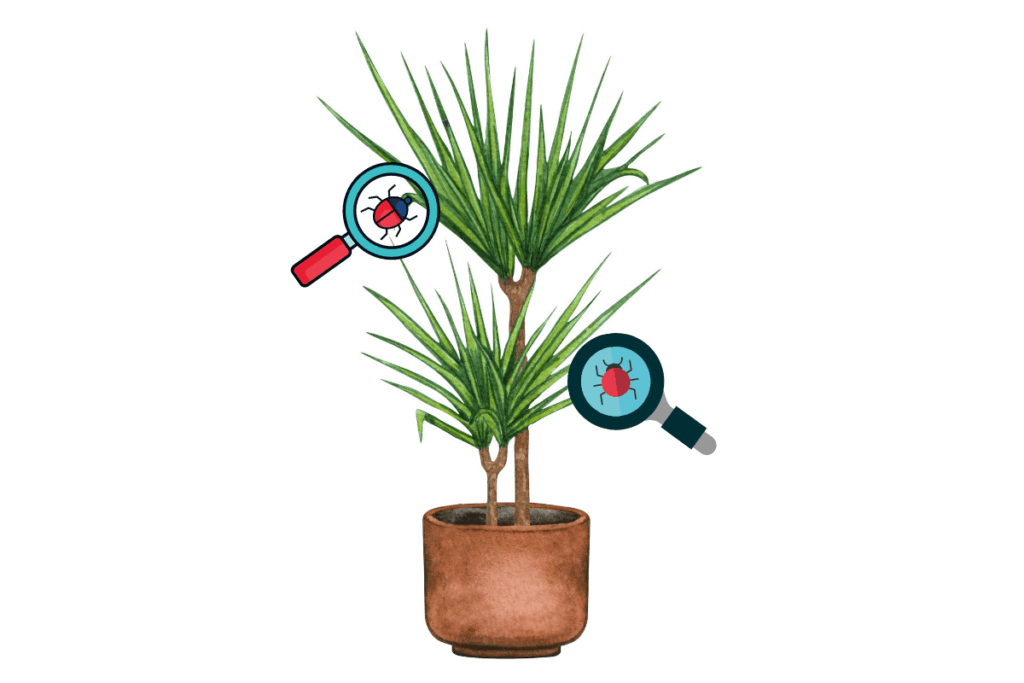
Save it! You can do it!
- Quarantine your plant away from the other plants to prevent an all-out infestation.
- Cover the pest-riddled plant’s soil with plastic.
- Hose the plant down with a showerhead. Do this in the morning so the plant can dry off throughout the rest of the day afterward.
- Apply horticultural sprays or insecticidal soap, provided that your Dracaena plant can tolerate it. I recommend using either Insect Soap or Neem Seed Oil from Amazon. Spray these directly onto the pests repeatedly over the next few days until all signs of infestation have subsided.
- Monitor the plant closely for another few days to ensure no new pests emerge.
- Rejoin your Dracaena plant back with the rest of your indoor plants.
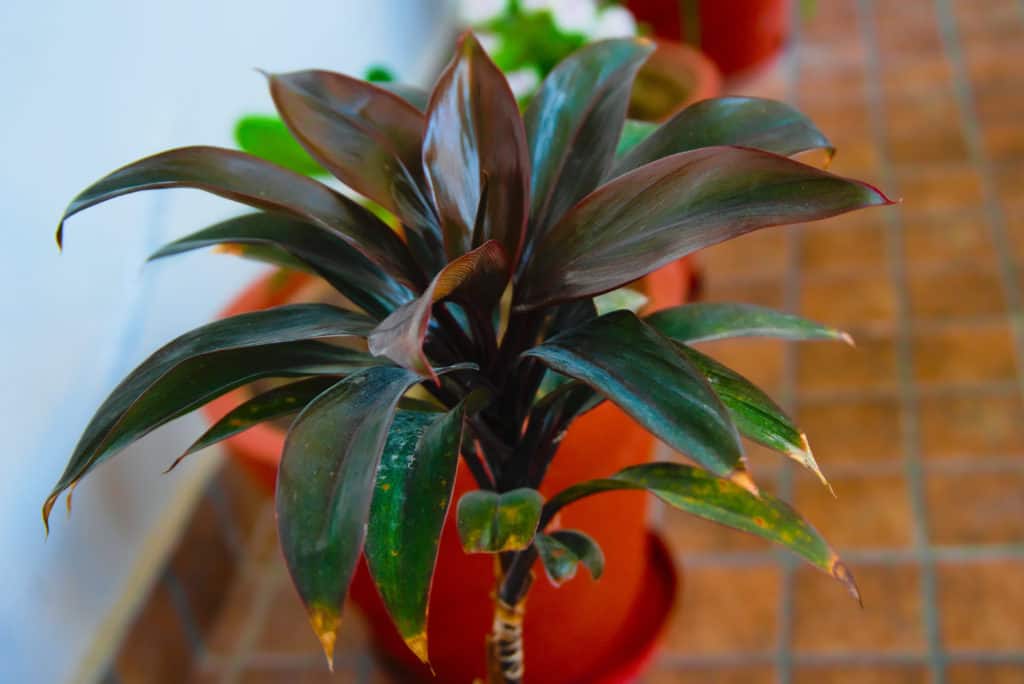
Check! Observe the plants’ leaves.
If there are multiple tiny, brown spots to large blotches on your leaves and it looks a little bit like a bull’s eye, this means your plant is suffering from foliage fungal disease. Water splashes left on the leaves during your plant’s watering session can cause this, creating the perfect ground for fungal spores to latch onto.
Save it! You can do it!
- Isolate your Dracaena away from the rest of the plants.
- Sterilize your cutting tool in 9:1 water to household bleach mixture for 10 minutes. Wash with soapy water and rinse thoroughly afterward. Dry well before use.
- Snip off all affected leaves with your sterilized cutting tool.
- Apply a fungicidal spray that is specifically formulated for your Dracaena variety. Otherwise, an all-purpose fungicide will do.
- Sterilize your cutting tool once again before putting it away.
If none of the above symptoms are what’s bothering your Dracaena plant, you can read this ultimate guide of common houseplant pests and diseases to diagnose your plant and save it.
How to Care for Your Dracaena Plant Now That You Saved it: The 4 Essentials
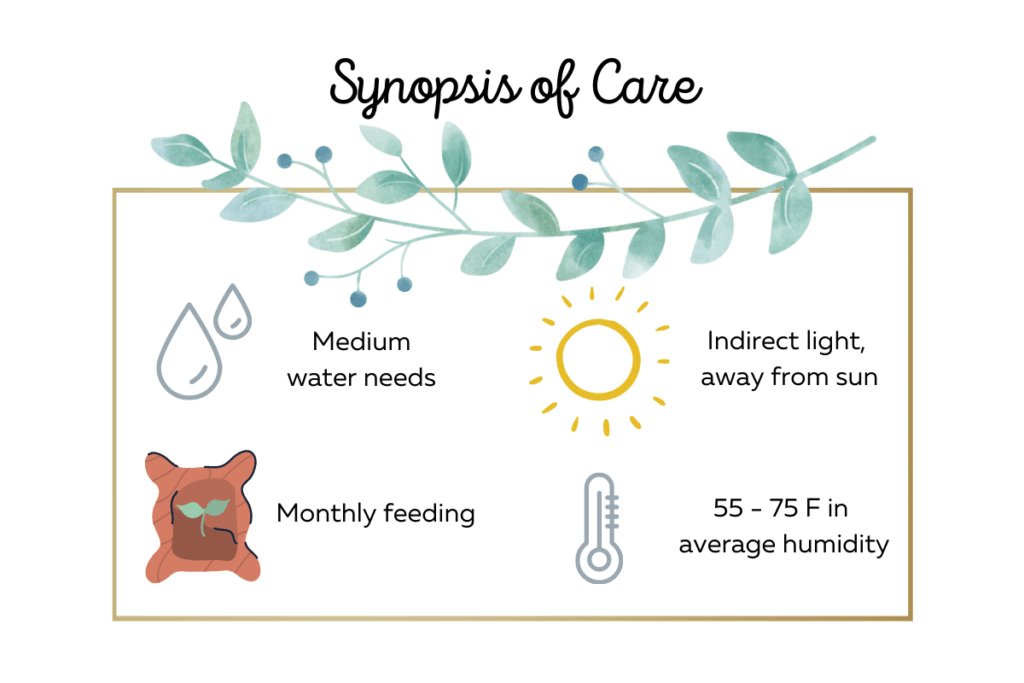
Proper Watering for Dracacenas is Every 2-3 Weeks
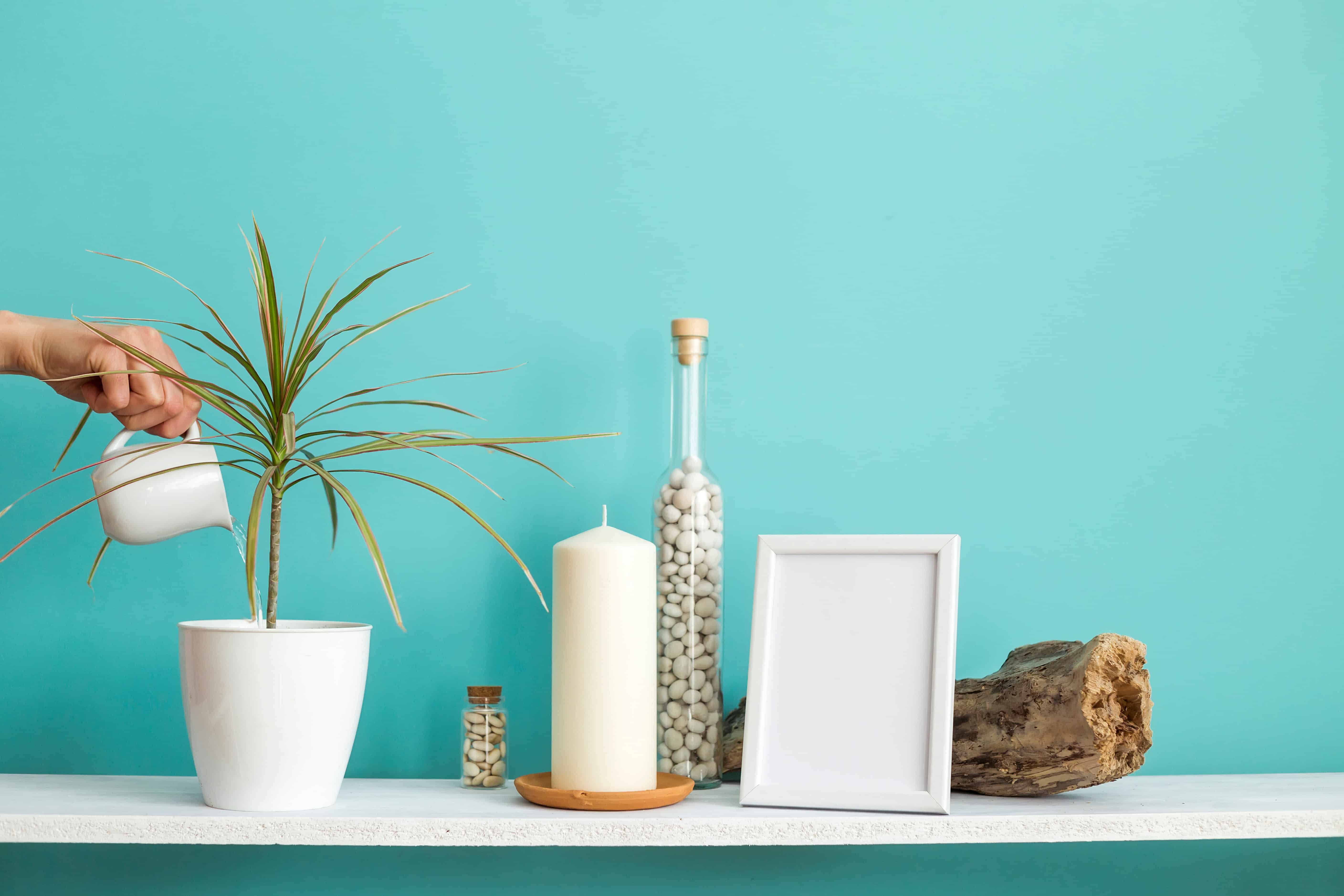
Similar to most tropical plants, Dracaenas like just enough water to keep their soil moist. As mentioned, a good watering schedule is every 2-3 weeks during the warmer seasons. If your plant is outside, keep in mind that water evaporates faster because of the heat, so be careful never to allow the soil to dry out completely for too long. Dracaena are pretty sturdy when indoors and can be left unwatered for a while. I often leave mine for a couple of weeks at a time. I would, however, use more caution if the plant is outdoors, especially in harsh sunlight because it can dry out and kill the plant much more quickly.
More watering tips in this article: How Dry Should Soil Be Before Watering? – With Helpful Tips
In the winter, water only once per month, depending on how moist the soil is. Cold winter temperatures cause plants to go into a dormant stage where it is not actively growing, and the plant limits its water intake since it won’t need as much in the dormant state. So don’t go dumping whole pitchers of water into the soil. Seriously, don’t water your plants too much in winter, it is the easiest rookie mistake to make.
Dracaenas are also quite sensitive to the minerals in tap water, particularly fluoride. Different areas will have varying mineral content in their water system. If you’re unsure of what is in your tap water, use distilled, filtered water, or even better, rainwater at room temperature instead. I have myself been fine using just plain old tap water but if you have ruled out root rot or too much sun being the cause of the brown-tipped leaves on your plant it is worth switching up the water source.
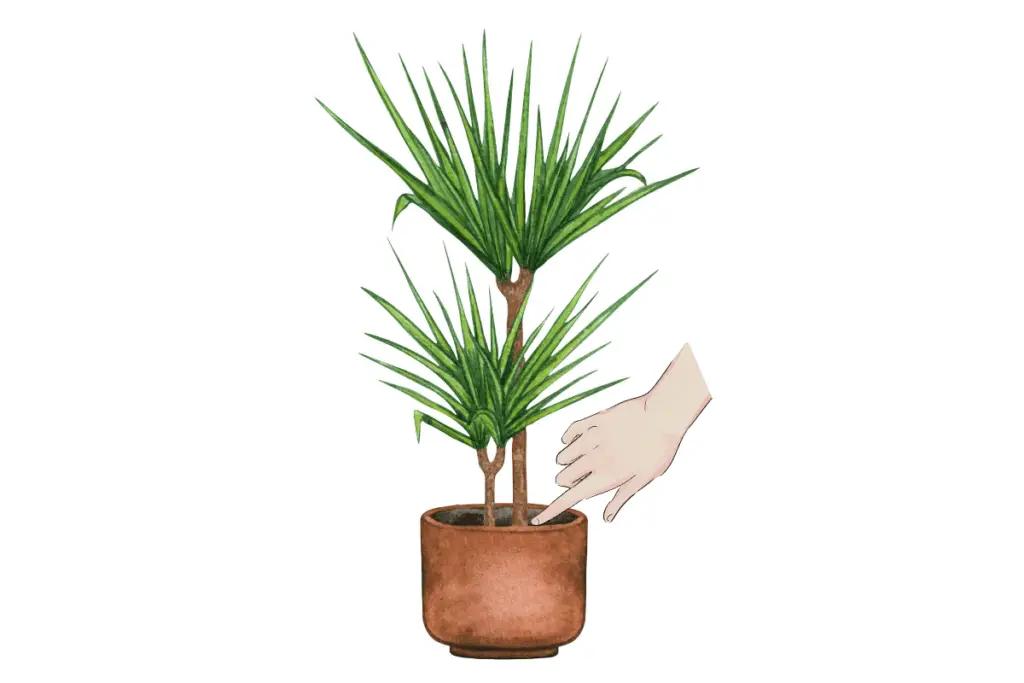
How to check if you need to water:
Knuckle-test – Feel the soil. Dip your fingers into the soil about an inch or two deep
a. If it feels damp, put off watering your plant for 3-4 days and check again then.
b. If it’s dry, pour water evenly around the soil until it drains out.
Remember to leave the plant for 15 minutes before removing excess water from the saucer. This step gives the plant some time to reabsorb the water through the roots if needed.
Click here if you want to learn more about the knuckle-test and proper watering.
Plant Dracaenas in Well-Draining, Aerated Soil
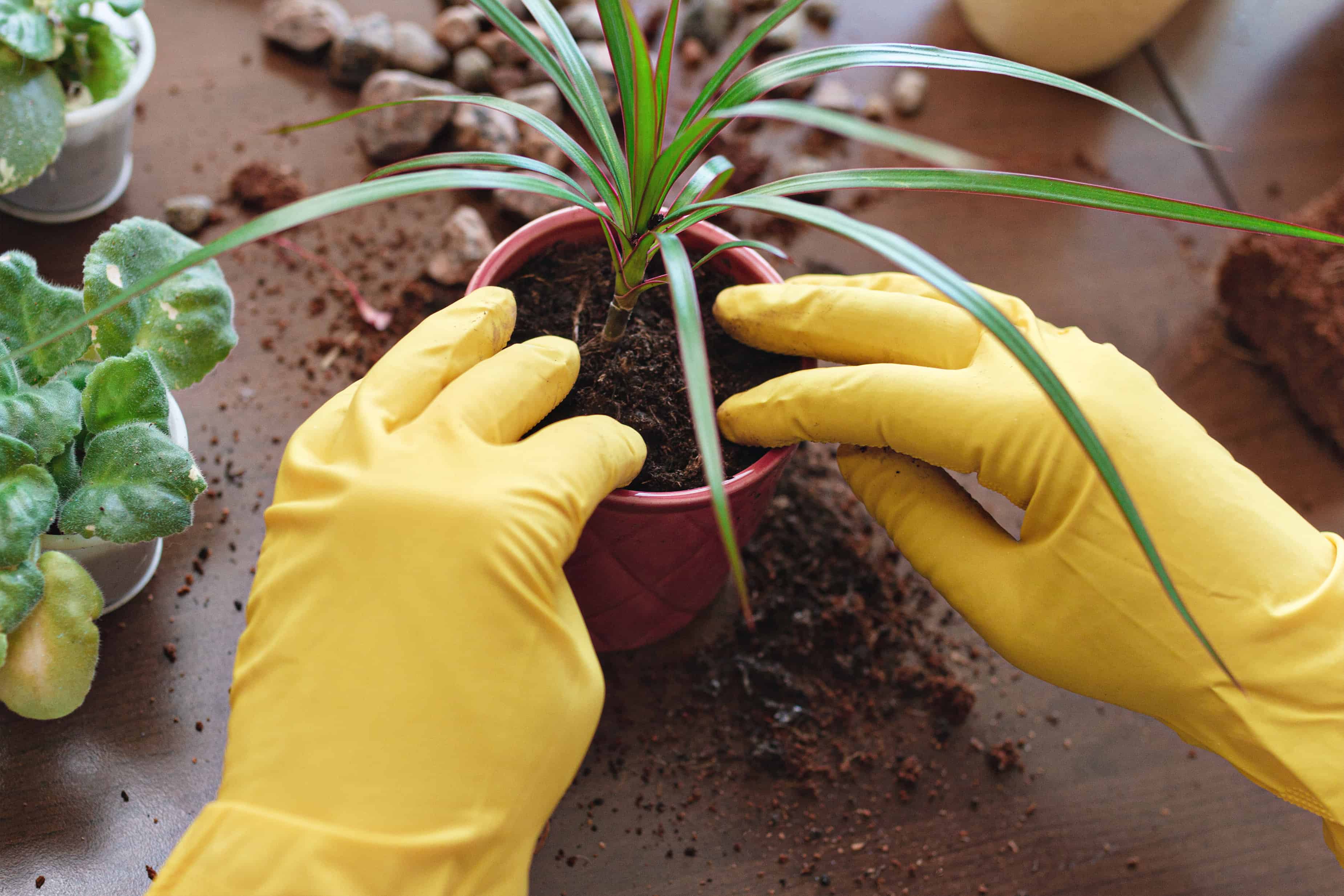
Dracaenas are all about oxygen and giving the roots the ability to breathe, which is why an ideal soil for them to thrive in is a loose (i.e., excellent aeration) and well-draining potting mix. However, note that Dracaena Sanderiana, aka ‘Lucky Bamboo’, can be planted in either soil or water medium.
If you purchase potting soil, I recommend mixing some additives like perlite, vermiculite, or coarse sand in it. This extra step improves the soil’s aeration unless already present in the soil as per labeled ingredients. These additives help establish good drainage with adequate drain holes at the pot’s base to prevent water from accumulating at the bottom.
Also, make sure to read the list of ingredients of your potting soil or mix before purchasing – the more detailed it is, the better. It can tell you whether you need to add any amendments like aeration additives or avoid fertilizing for the first month if it comes with fertilizers in the mix.
Typically, fertilizing should be done monthly during spring and summer with a water-based solution diluted to ½ strength. Potting soils & mixes don’t have what garden soil does – consistent, newly available nutrients for the plants to live off of. Once plants take up the available nutrients in potting soil or mix, there is nothing left. Because of this, regular but moderate fertilization is beneficial for your potted plant’s growth. I’d recommend giving the All-purpose Houseplant Fertilizer on Amazon a go.
However, some varieties like Dracaena Reflexa’ Variegata’, aka ‘Song of India’ require biweekly feedings in a month. In winter, however, avoid feeding the plant with fertilizers at all because their dormant state will not allow absorption and you may “burn” your plant’s roots and either temporarily stunt its future growth or possibly kill it. Make sure to note the fertilizer’s contents and avoid those with fluoride and superphosphates present. These minerals will cause the leaves to turn a sickly yellow color.
More soil & fertilization tips in this article: The 4 Basic But Very Important Elements of Houseplant Care: 2. Soil
Provide Indirect Sunlight to a Dracaena plant
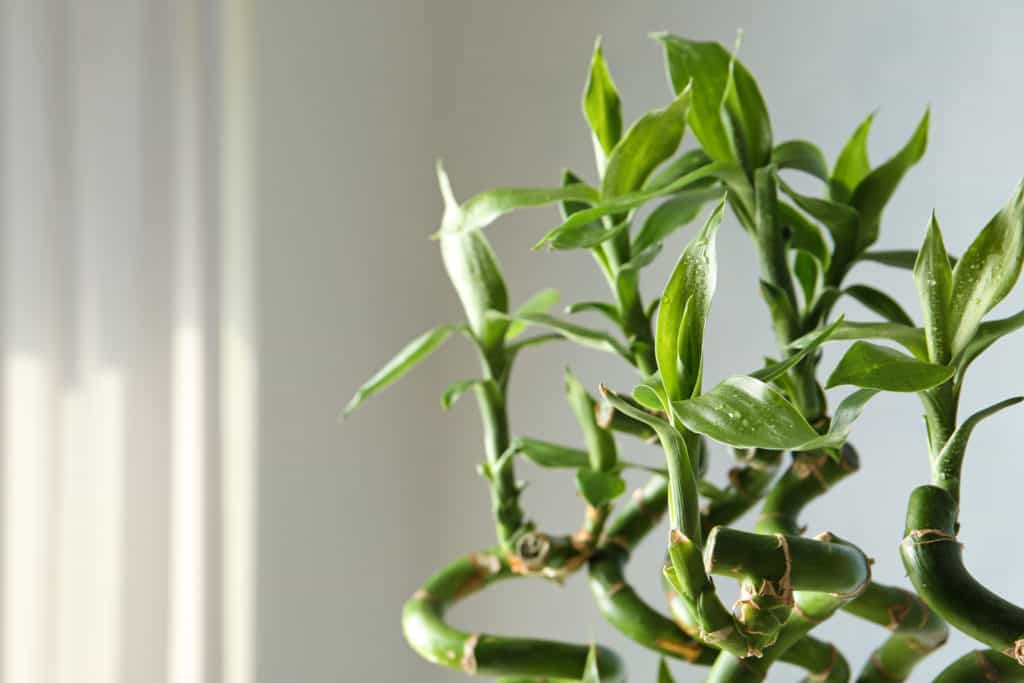
Despite being known as one of the plant species that can tolerate low-light conditions, Dracaenas need plenty of bright, indirect sunlight to grow well. However, they do not do well when exposed to harsh, direct rays from the sun. It is crucial to place the plant in a relatively bright spot with curtains shielding it from direct sunlight to get optimal results.
Check! Observe your plants’ leaves.
This only applies to variegated varieties, i.e., Dracaenas with white, pink, cream, or lilac markings on their leaves. If the colors on their margins have faded, this means that the plant is getting too little light. Similarly, the leaves will stretch out and look considerably sparse to seek out more light. Slowly move the plant to a brighter location a 5-10ft closer each week if it is very far away from your window, letting it get used to its new surroundings.
More tips on sunlight in this article: The 4 Basic But Very Important Elements of Houseplant Care : 3. Sunlight
Place Dracaenas in Average Humidity with Warm Air Circulation
Dracaenas love when it’s warm and humid, like in their native homes. So ideally, it’s best to provide them an environment with a temperature range of 55-75°F (13-24°C) in average humidity (>40%). Typically, the average household’s humidity is enough for this plant. However, temperature-wise, avoid placing it near any cool or heat sources that may cause temperature fluctuations to prevent stressing the plant. Try using a Thermo-Hygrometer from Amazon to monitor both humidity and temperature if you want to go pro.
More air & humidity tips in this article: The 4 Basic But Very Important Elements of Houseplant Care: 4. Air
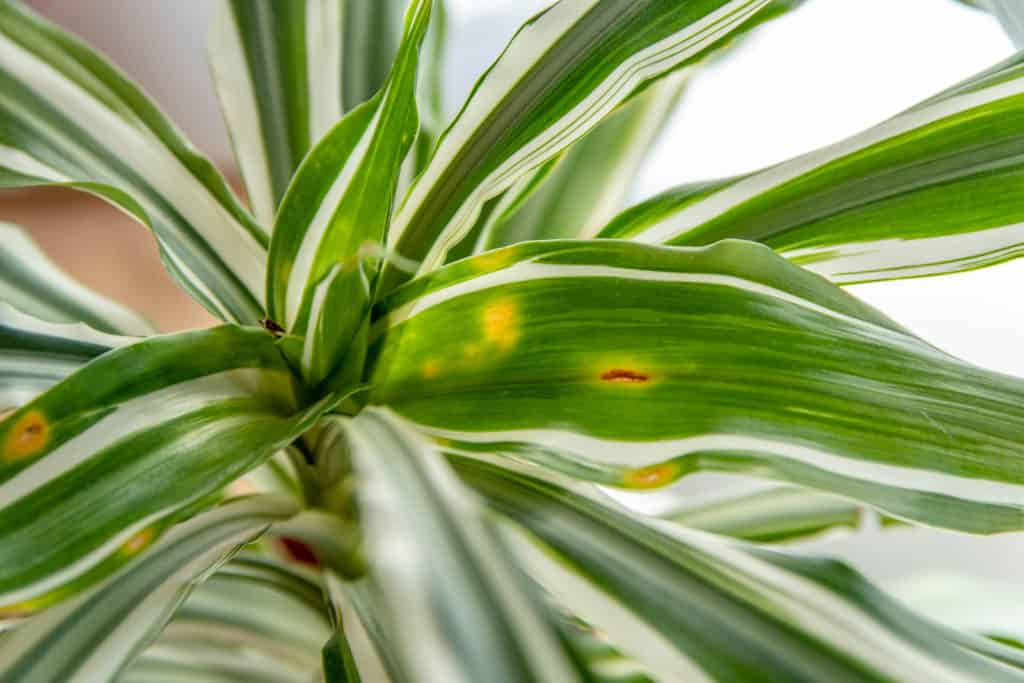
Check! Observe your plants’ leaves.
a. If there are white or yellow spots on the leaves, this means the plant has been suffering from low temperatures for quite some time. Dracaenas don’t generally mind the occasional breeze, but it’s better to avoid placing it where there is a cold draft. Move the plant to a warmer place and monitor it for the next few days to see if its condition improves.
b. If the leaves have turned brown and then to dark grey, the plant has reached the “critical” stage where it may not bounce back. The best thing you can do is trim all damaged leaves and keep your plant in a consistently warm area. Make sure to water it sufficiently as needed (do the knuckle test!) and provide proper sunlight needs. Luckily it is rare to see Dracaena in this state as they are sturdy breeds.
However, if the plant gets to this point, it is in dire need of your help, so make sure to do the best you can and keep careful track of it for the next few days.
Dracaena’s Additional Care:
Repotting a Dracaena plant
Although Dracaenas are slow-growing plants, it is best to repot them every 2-3 years to let them grow comfortably as they mature. Repot your Dracaena in early spring, making sure to water it the day before so the soil will hold when you transplant your plant to a bigger pot. Make sure to avoid repotting plants that are blooming or budding.
Prepare the following items:
A. A larger pot. Measure the opening diameter of the pot and ensure it is 1-2 inches wider than the previous one.
B. Fresh, well-draining potting mix.
C. A small trowel. Use your hands if you’d like.
D. A clean, flat surface to work on with some newspapers laid out.
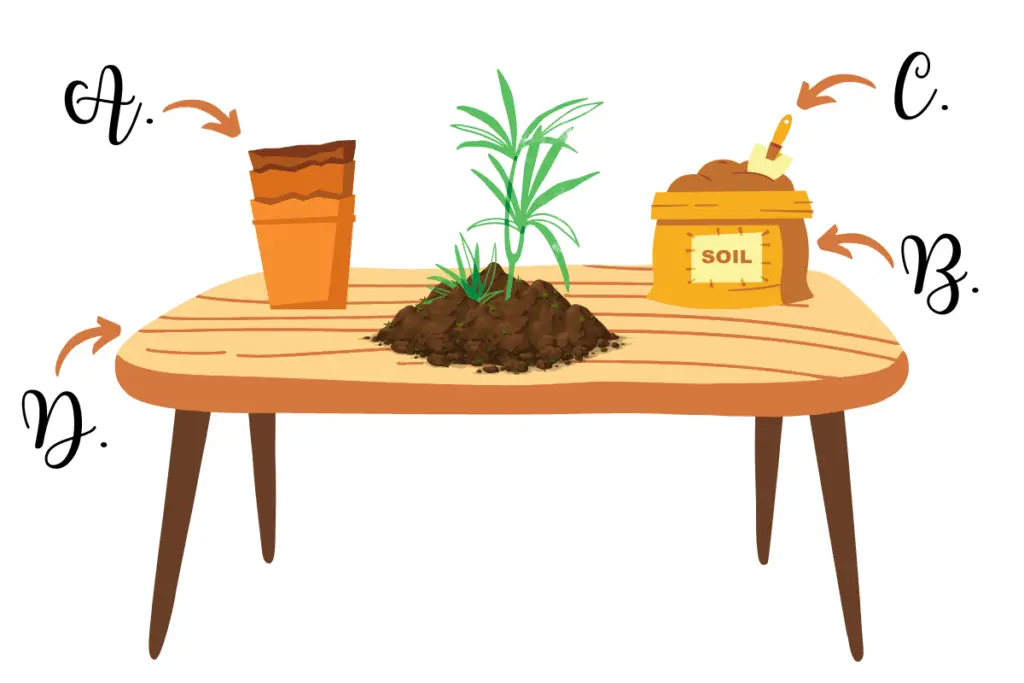
Follow the steps below:
- Tip the plant to its side and carefully slide it out of its pot. If it’s not coming out, ease a knife in at the sides to loosen up the soil.
- Once you’ve removed the plant, check the roots for signs of root rot, i.e., smelly, mushy, and black roots. Deal with the root rot first, as mentioned earlier in this article. If there are no infections whatsoever, move on to the next step.
- Fill the new pot halfway with fresh potting mix.
- Place your Dracaena in the middle.
- Fill the pot with new soil around the plant while holding it in place.
- Water your repotted Dracaena lightly to make the soil moist.
- Place the plant in its ideal conditions, as mentioned earlier in this article. Make sure to keep it away from direct sunlight and avoid fertilizing for up to 6 weeks until your plant has settled comfortably in its new home.
If the plant is too large to repot, another viable solution is to top-dress it instead:
- Remove 2-3 inches of the old soil at the surface.
- Add fresh soil to the top. Make sure not to push it down to avoid compacting it. This way, the roots are not disturbed while your Dracaena gets new nutrients from the mixed soil.
Check! Observe what happens when you water your plant.
If water flows out quickly, but the soil is still dry (dip your finger into the soil to check), this means the soil has become hydrophobic and needs to be changed. Peat-based soil decomposes over time, becoming more compact; if it goes through a period of dryness, it eventually becomes hydrophobic and non-reusable. Place your plant into a new pot with fresh, well-draining pot mix.
Propagating Dracaenas
It is relatively easy to propagate a Dracaena as its leaves grow at the end of the stems:
- Snip the stem 2 inches below the leaves.
- Place this either within the same pot with the parent plant or into another prepared pot. Roots will grow from the cut end of the offspring. New leaves will develop on the parent plant’s cut stem and eventually on the stem too.
Want more detailed instructions? Check out our article: The Ultimate Guide on How to Propagate Houseplants
Maintaining a Dracaena plant by Pruning
Prune your Dracaena to keep it looking spunky and handsome. If you’re looking to adjust its height, shear off from the top to the desired length you wish for it to stay at. Take note that once you cut it short, it will most likely remain at that height for a long while, giving it a bushier look.
For pruning foliage, trim off any damaged or unhealthy leaves at its nodes with a cutting tool; nodes refer to the slightly swelled-up rings on the cane. Alternatively, you can pull these leaves downward, one at a time, at its base until it comes off.
From time to time gently wipe each leaf down with a damp cloth to prevent dust build-up on your plant. This small step keeps your Dracaena neat and helps eliminate any pests that might be lying around the plant. It also allows the plant to breathe better and absorb its much-needed supply of sunlight for photosynthesis.
You can read more about pruning houseplants in general in this article here.
Final Words
Once you have all those taken care of and dusted, it becomes second nature to care for your tropical green mates. Trust me when I say that there is nothing more gratifying than seeing a jubilant Dracaena plant vibing in your home or office from all your efforts.
References:
https://leafyplace.com/types-of-dracaena/
https://www.gardeningknowhow.com/houseplants/dracaena/dracaena-pest-control.htm
https://www.thespruce.com/grow-dracaena-marginata-indoors-1902749
https://smartgardenguide.com/why-does-my-dracaena-have-brown-tips/
https://www.houzz.com/discussions/4029834/how-long-is-too-long-dracaena-marginata-roots-dried-out
https://plantcareforbeginners.com/articles/how-to-care-for-dracaena
https://www.wikihow.com/Care-for-a-Dracaena
https://www.westcoastnurseries.com/dracaena-tips-to-help-repot-a-large-dracaena/
https://thepracticalplanter.com/how-to-save-a-dying-corn-plant/
https://www.houzz.com/discussions/1464362/help-saving-a-frostbitten-striped-dracaena
https://extension.psu.edu/dracaena-diseases
https://beangrowing.com/save-a-dying-dracaena-marginata-plant/
https://smartgardenguide.com/madagascar-dragon-tree-care/
https://www.thespruce.com/dracaena-overview-care-1902754
https://en.wikipedia.org/wiki/Dracaena_trifasciata
https://en.wikipedia.org/wiki/Dracaena_(plant)
https://www.aspca.org/pet-care/animal-poison-control/toxic-and-non-toxic-plants/dracaena


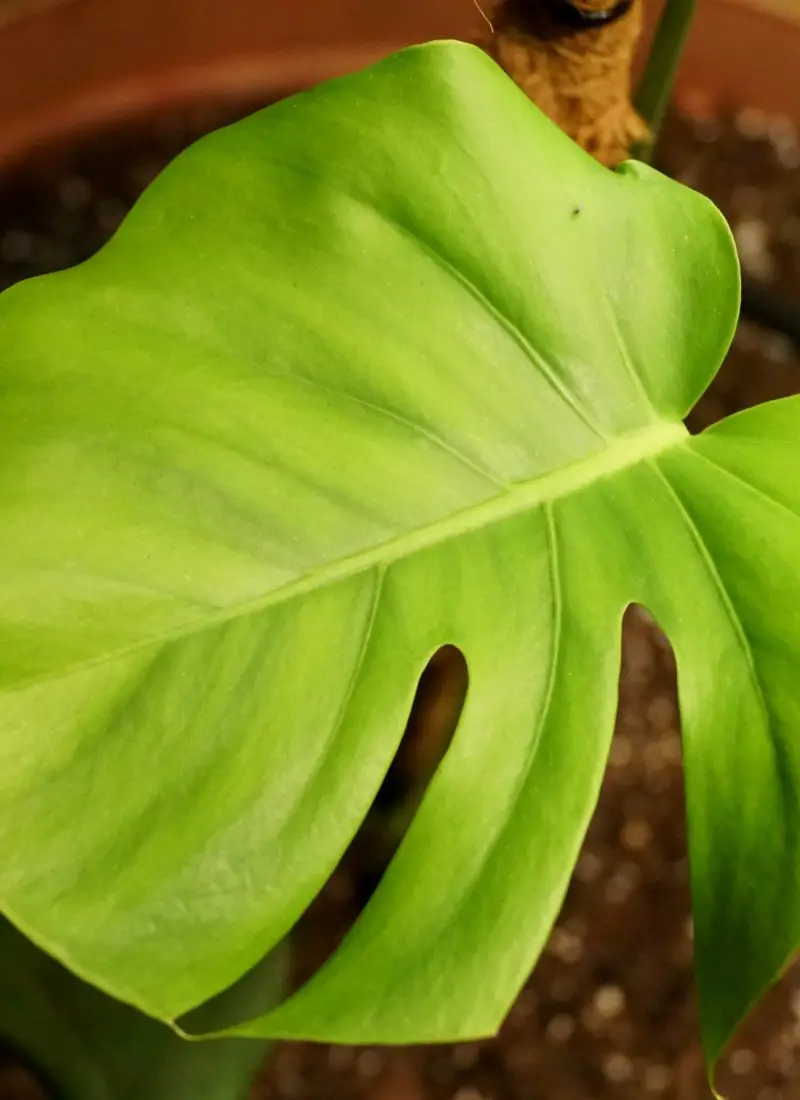
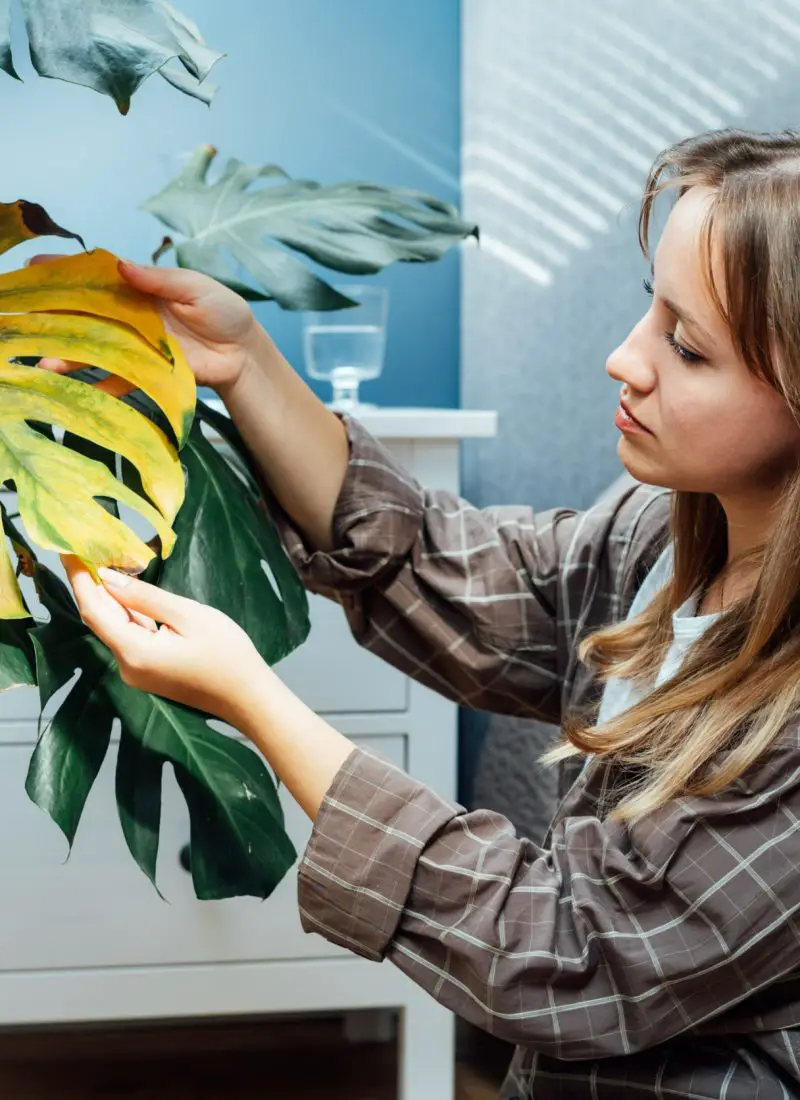
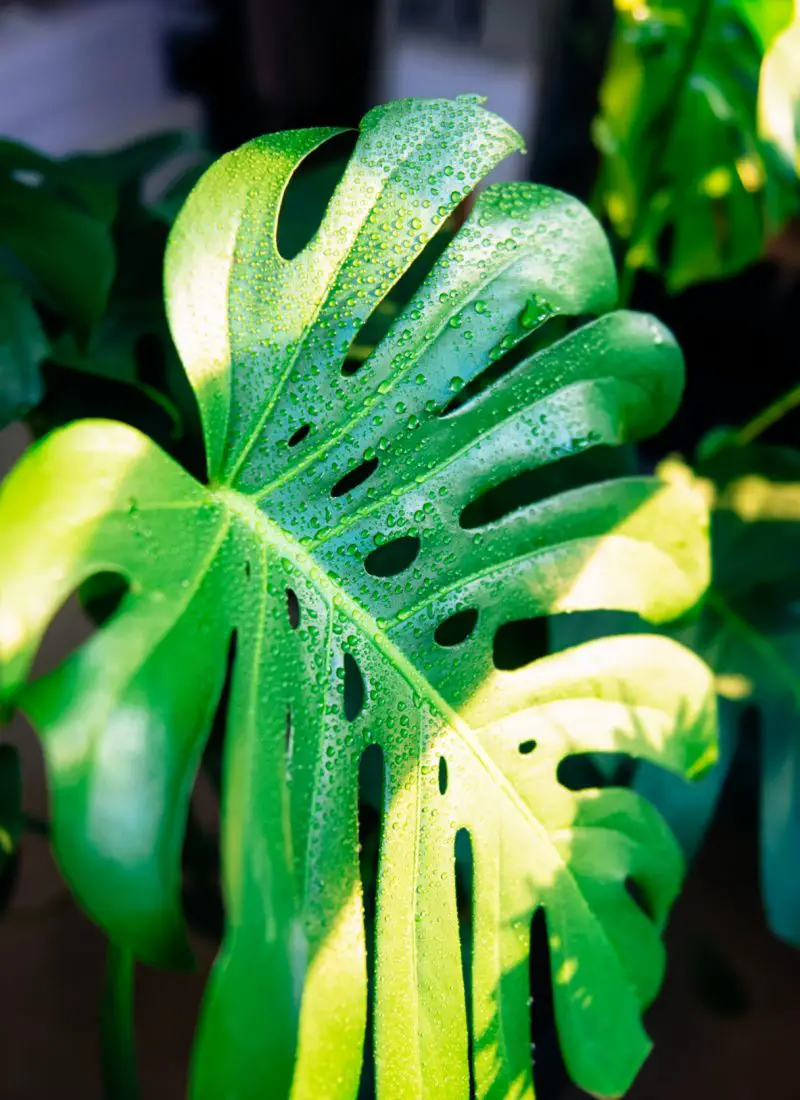
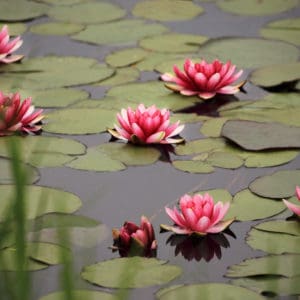
Leave a Reply